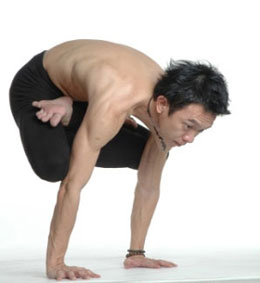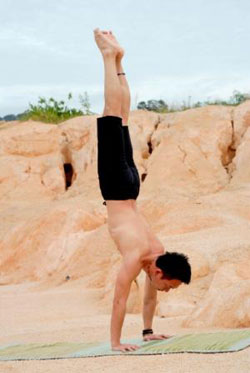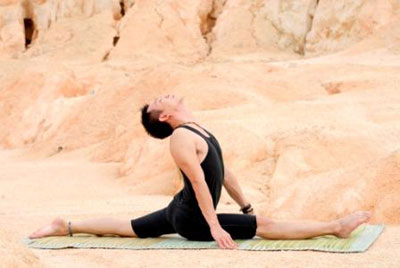 Dynamic vs static. Soft vs hard. Yin vs Yang.
Dynamic vs static. Soft vs hard. Yin vs Yang.
In yoga, the most important element is to strike a balance between both sides.
According to Gilbert Ng, the former Chief Instructor at Yoga Zone and currently, a well-known international yoga trainer, a yoga practitioner should not always practise just one form of yoga because one favours it but should try to switch between the two to suit the condition of the body.
And what is dynamic and static yoga?

Examples of DYNAMIC YOGA are Ashtanga, Power Yoga or Yoga Core – yoga that is fast-paced and energetic; providing the body with a good cardiovascular workout and enhancing blood circulation. This helps to improve one’s lymphatic function which, in turn, builds up the immune system and prevents one from being susceptible to illnesses.
Forms of STATIC YOGA are Yin Yoga, Hatha Yoga or Restorative Yoga – yoga that is more slower-paced, calm and peaceful. Static yoga is geared towards classical postures that improve balancing, strength and flexibility. This helps to stimulate the body’s nervous system, which controls the functioning systems of the rest of the body such as the muscular, digestive, immune, respiratory and cardiovascular systems.
Gilbert shares that too much dynamic yoga may cause the body to overwork itself and burn out from fatigue. Similarly, excessive static yoga can cause hyperflexibility; an unstable condition of the body that is too flexible.
As the body becomes more flexible, one must also have the strength to support that flexibility to form a healthy balance
says Gilbert.

Ideally, one should practise a balance of both static and dynamic yoga so that the body has time to restore its energy; preventing exhaustion and reducing the risk of injuries.
Stay-tuned to KL Yoga this month for the upcoming interview with Gilbert Ng on starting his own yoga centre Ojasyoga, and his thoughts on the now defunct Yoga Zone.